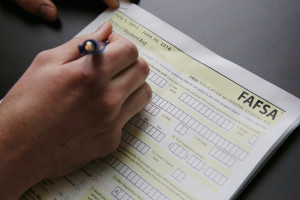To meet the goal of students become better informed in regards to their financial aid offers, the Federal Government has released the FAFSA (Free Application for Federal Student Aid) three months earlier, moving the initial start date from January 1st to the prior October 1st.
This means that the FAFSA went live on Saturday! Haven’t filled it out yet? Don’t panic – there’s no need to drop everything to fill it out right now, but there are advantages to being on the ball and filling it out sooner rather than later.

Technically, a student heading off to college for the first time next September has until June 30, 2018 (nope – not a typo) to fill out the FAFSA and receive aid. But there are a lot of reasons why waiting that long is not a wise choice. First of all, some of the need-based aid, like Perkins Loans, are given out on a first-come, first-serve basis to students who meet the qualifications for them.
Additionally, the federal deadline isn’t the only deadline you need to worry about with financial aid – there are also state deadlines (in California, the deadline is March 2, 2017) and individual school deadlines (like USC’s financial aid deadline of February 14, 2017). The last thing you want to find out is that you could have qualified for additional aid had you simply turned in the FAFSA earlier.
For those families filling out the FAFSA for the 2017-2018 school year, you will be using your 2015 tax returns (filed this past April). The FAFSA links with the IRS database using the IRS Data Retrieval Tool, so a lot of the info will already be there!
Before sitting down to fill your aid out, make sure you have the following information on hand for the student:
- Your Social Security Number
- Your Alien Registration Number (if you are not a U.S. citizen)
- Your most recent federal income tax returns, W-2s, and other records of money earned. (Note: You may be able to transfer your federal tax return information into your FAFSA using the IRS Data Retrieval Tool.)
- Bank statements and records of investments (if applicable)
- Records of untaxed income (if applicable)
- An FSA ID to sign electronically
If the student is a dependent, the parents will also need the above information for themselves as well.
Don’t let the anxiety of figuring out the financials for college stop you from tackling the FAFSA. The sooner you get started, the more time you have for questions … and the more money you just might find!
Click here to get started today.
Need help? Don’t hesitate to reach out to us. We are happy to walk you through the ins and outs of financial aid. Additionally, don’t hesitate to contact the financial aid offices of the schools you are applying to. They are only too happy to help.

